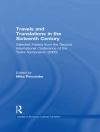William Shakespeare’s hilarious fairy tale (with actual fairies!) of love, magic potions and teenage rebellion, ‘A Midsummer Night’s Dream’ might be the most performed play in the history of the English-speaking theatre.
The play begins as Athenian Duke Theseus is preparing to wed Hippolyta, the Queen of the Amazons. As they ready for their nuptials, Theseus is asked to settle a dispute between a prominent local citizen Egeus and his headstrong daughter Hermia. Egeus wants Hermia to marry young Demetrius, but Hermia. for her part, in love with Lysander. What’s more: Demetrius has been dallying with (and abandoned) the lovely Helena (who is devoted to him), but Demetrius scorns the match. When Theseus sides with Egeus, Hermia and Lysander flee into the woods with Demetrius in hot pursuit (and Helena close at his heels).
Meanwhile, the woods are seeing their own drama play out: the Queen of the Faeries, Titania, is refusing to accede to the demands of the Faery King, Oberon and the vengeful Oberon enlists the help of the sprite Puck to teach her a lesson. Puck obtains a magic potion that will – when given to a sleeping victim – cause them to fall in love with the first creature they see upon awakening. Titania, dosed with the potion, awakens to find a local actor who Puck has adorned with a donkey’s head as a prank…and immediately falls for him, much to Oberon’s amusement.
A wild and twist-filled story of romance, magic and true love, ‘A Midsummer Night’s Dream’ is presented here in its original and unabridged format.
Sobre el autor
William Shakespeare is generally acknowledged as the greatest dramatist in the history of English literature. Also a poet and actor, Shakespeare was born in Stratford-Upon-Avon, where he received an education at the local grammar school, but whether he attended any educational institution subsequent to his early tutelage is unknown. By eighteen, Shakespeare was married – to an already-pregnant Anne Hathaway – and the couple would go on to have three children, Susanna and the twins Hamnet and Judith. (Hamnet died at 11 years old.) Shakespeare moved to London soon after the birth of the twins and began publishing poems (‘Venus and Adonis’ (1593) and ‘The Rape of Lucrece’ (1594)) and joined the Lord Chamberlain’s Men as an actor and playwright. Shakespeare stayed with the Lord Chamberlain’s Men throughout his career, producing some of his finest work – ‘King Lear, ‘ ‘Macbeth’ and ‘The Tempest’ among them – after the company fell under the patronage of King James I and became The King’s Men. During his career, Shakespeare penned 38 plays, two narrative poems and over 150 sonnets and enjoyed considerable financial success, eventually buying New Place, one of the largest homes in Stratford. Following his death in 1616 at the age of 52, thirty-six of his plays were collected and published as the First Folio and his entire canon – including his extant plays, sonnets and poems – were published as The Complete Works of William Shakespeare. Shakespeare’s plays are the most produced dramatic works in existence and they have been translated and adapted into countless stage, screen and television productions over the years. Entire theatres are devoted to producing his works and his writings are studied and analyzed in literature classes around the world.












